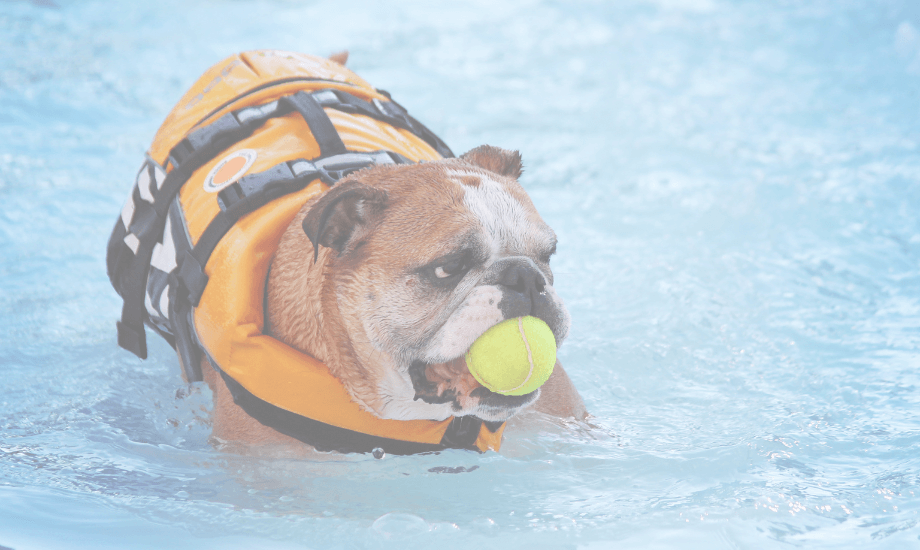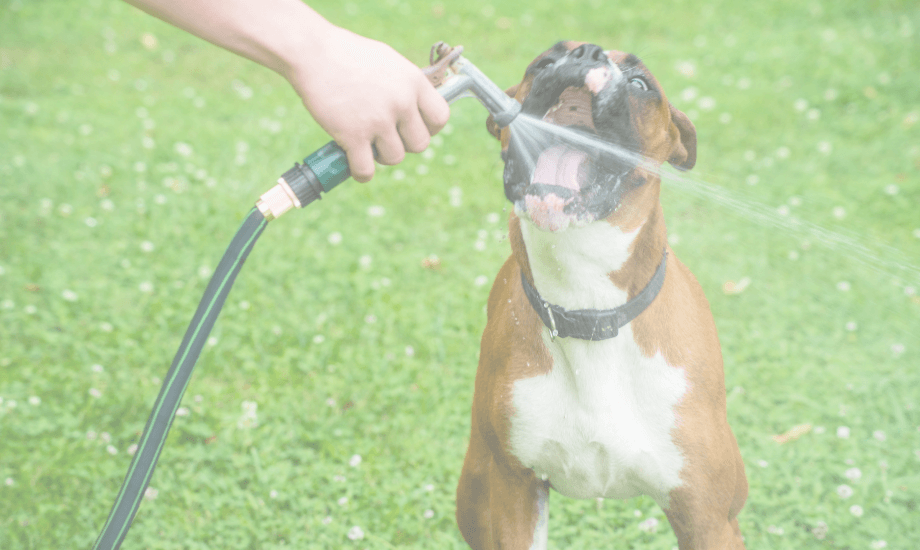We’re really into the dog days of summer – no pun intended. High temperatures and long, sunny days mean a lot of time spent outside, and that’s great! But they also mean the risk of heat stroke in dogs, and that can be dangerous.
Heat exhaustion and heat stroke in dogs are serious, but the good news is they are also preventable and treatable. Read on to learn more about what heat exhaustion and heat stroke are, how to prevent them, and what to do if your summer-loving dog gets too much of a good thing.
☀️ What is heat stroke in dogs?
Unlike humans, dogs can’t regulate their body temperature by sweating. Instead, they pant to get rid of excess heat. But when they’re in hot temperatures for a long time, panting might not cool them down quickly enough.
Heat exhaustion happens when your dog’s body temperature rises above what’s normal. If your dog’s temperature gets and stays too high, that can turn into heat stroke and put your pet at risk for serious health problems.
Normal body temperature for dogs is 38.1-39.2 C (100.5-102.5 F). If that temperature rises to 39.4-41.1 C (103.0-106.0 F), your dog has heat exhaustion. If it gets above 41.1 C (106.0 F +), your dog has heat stroke, which is even more serious.
🐕 Is my dog at risk of heat stroke?
Any dog can develop heat exhaustion or heat stroke, but the risk is higher for some of our furry friends. If anything on this list describes your pet, pay extra attention to keeping them cool during summer:
- Dogs with thick coats and/or long hair.
- Very young or very old dogs.
- Dog breeds with short noses and flat faces, like pugs, shih tzus, boxers, and bulldogs.
- Overweight dogs.
- Dogs with heart or breathing conditions.
🚰 How can I prevent heat exhaustion in my dog?
A bit of planning and a watchful eye can help you keep your dog safe this summer. Keeping your dog hydrated is one important way to help them handle the heat. Bring plenty of water when you’re out in warm weather, and offer it to your dog regularly.
*TIP! If your dog has trouble drinking enough water, sprinkle in any of our booster products or cod skin flakes and watch the water disappear!
Take it easy with activity for your dog on hot days, and plan walks or runs for the cooler morning or evening hours. And if your dog has long fur, consider a summertime trim.
Also, look for opportunities to give your dog a break from the heat. Spend time in the shade, or pop inside to take advantage of some AC. And when it’s an option, let your dog cool down in a sprinkler, pool, or body of water.
❓ What are the signs of heat exhaustion in dogs?
Heat exhaustion can happen even if you do everything right as a pet parent. On hot days, look for these signs that your dog is at risk:
- Excessive panting or drooling.
- Fast and noisy breathing.
- Disorientation.
- Lack of energy.
And if your dog has any of these signs of heat stroke, get them to a vet asap:
- Glazed eyes.
- Collapsing.
- Convulsions.
- Vomiting or diarrhea.
- Gums or tongue that turn blue or bright red.
- Rapid heartbeat.
🏥 What should I do if I think my dog has heat stroke?
If your dog is showing some of the above signs of heat exhaustion or heat stroke, get them to a vet as quickly as you can. Excess heat can be very dangerous for dogs, leading to organ failure or even death.
On your way to the vet’s office, act fast to cool your dog down. Use air conditioning or a fan aimed at their body. Give them cool liquids or treats if they’ll take them, and wet their fur with cool water or wet towels. Your vet may give treatments like an IV for fluids, electrolytes, or ventilation, based on how severe your dog’s condition is.
💡 #DYK?
The saying ‘the dog days of summer’ refers to the period of time after the star rise of Sirius, also called the dog star. Sirius is the brightest visible star, and Greeks believed its return to the night sky every year caused summer’s heat!
We know heat-related illness is scary, but the good news is that it’s also avoidable. As a pet parent, you can help your dog by keeping them hydrated, spending time in the shade, and watching for signs the heat is taking a toll. With these tips in mind, your entire family can enjoy warm weather outside!
Stay healthy, stay happy, stay curious #healthygang!
Lots of love,
- The healthybud team
DISCLAIMER: The information presented here is not meant to replace your vet’s advice or prescribed medications, but only to suggest additional options to explore, based on your dog’s condition.
Support your best bud’s health with high quality, healthy foods and treats you will both feel great about. Visit the healthybud website now to learn more about our products and subscription options.











